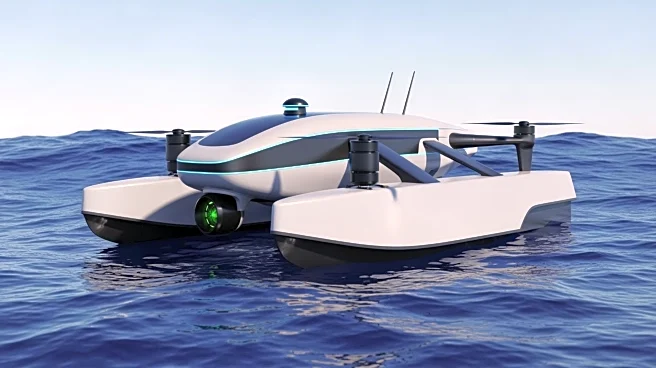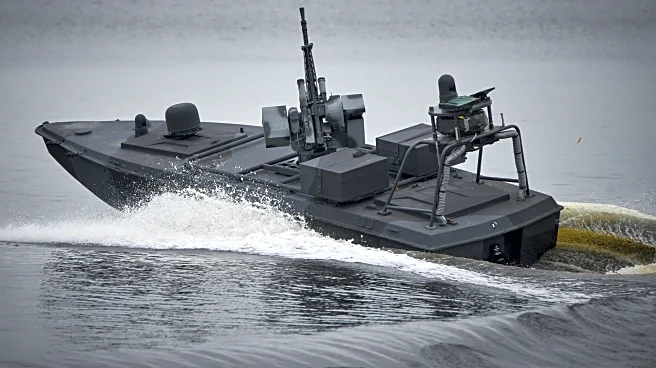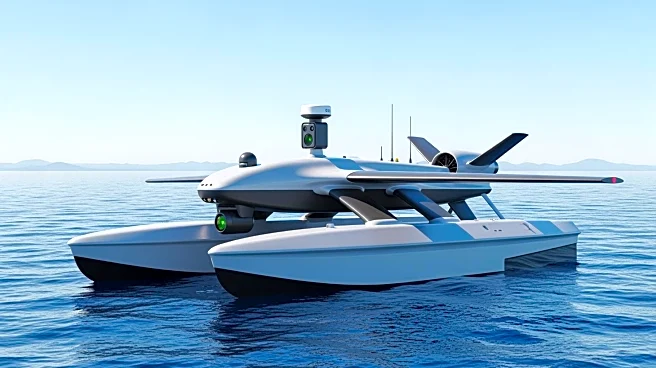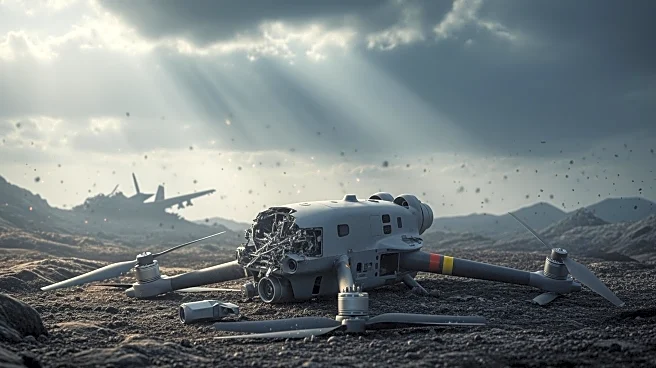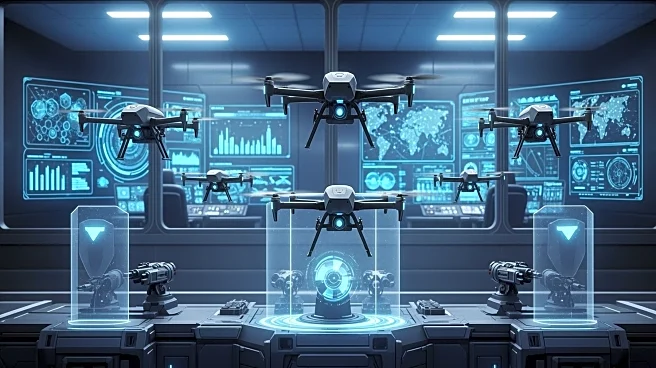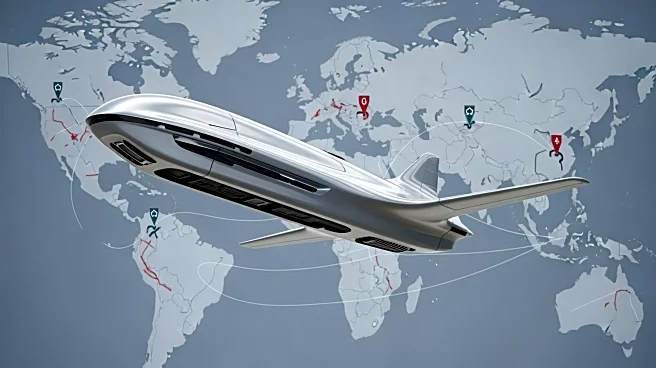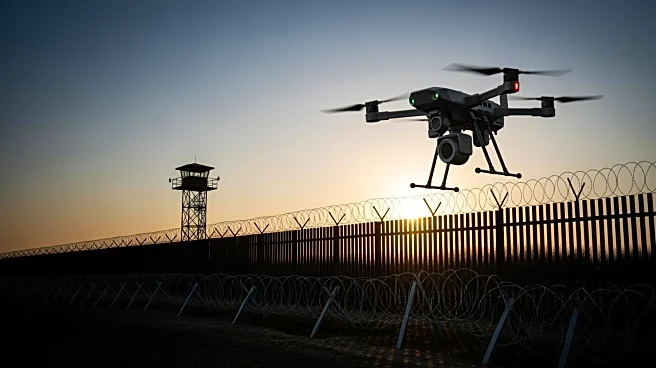What's Happening?
Ukraine's state security service has introduced an upgraded sea drone, known as the 'Sea Baby,' which can now operate throughout the Black Sea. The drone has been enhanced to carry heavier weapons and
utilize artificial intelligence for targeting. The Security Service of Ukraine (SBU) has credited the Sea Baby with influencing Russian naval operations, prompting a strategic shift. The drone's range has been extended from 1,000 kilometers to 1,500 kilometers, and it can carry up to 2,000 kilograms of payload. Variants of the drone include vessels equipped with a multiple-rocket launcher and a stabilized machine-gun turret. The SBU has also integrated AI-assisted friend-or-foe targeting systems and the capability to launch aerial attack drones.
Why It's Important?
The development of the Sea Baby represents a significant advancement in naval warfare, particularly in asymmetric strategies. By enhancing the drone's capabilities, Ukraine aims to maintain pressure on Russian naval forces, potentially altering the balance of power in the region. The ability to strike anywhere in the Black Sea could disrupt Russian supply lines and military operations, impacting regional security dynamics. The use of AI and advanced weaponry in these drones highlights the increasing role of technology in modern warfare, potentially setting a precedent for future military innovations.
What's Next?
The Sea Baby program is partially funded by public donations and coordinated with Ukraine's military and political leadership. As the drones continue to evolve, they may be used in more strategic operations against Russian forces. The ongoing development and deployment of these drones could lead to further relocations of Russian naval assets and adjustments in their operational strategies. The success of the Sea Baby could inspire other nations to invest in similar technologies, potentially leading to a new era of naval warfare.
Beyond the Headlines
The ethical implications of using AI in military operations are significant, raising questions about accountability and decision-making in warfare. The integration of AI in targeting systems could lead to debates on the role of human oversight in military actions. Additionally, the reliance on public donations for military technology development highlights the intersection of civilian involvement in national defense strategies.


